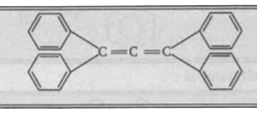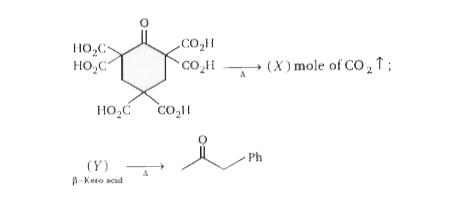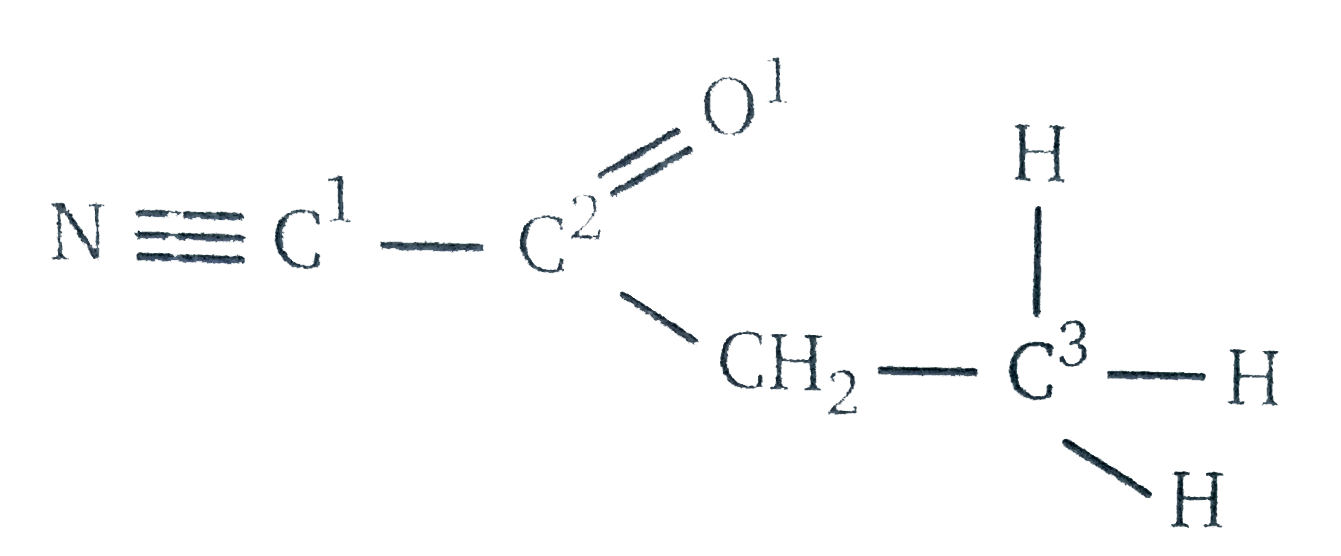
Give the type of hybridization present at each atom.
(i) C1− ………… (ii) C2 -(iii) O -…………..
……………. (iv) CH2 - …………. (v) C3 - ………….Solution in Telugu
The correct Answer is:i.−sp;ii–sp;iii–sp2;iv−sp2;v−sp3,vi–sp3
Topper's Solved these Questions
- BOOK - MS CHOUHANCHAPTER - GENERAL ORGANIC CHEMISTRY EXERCISE - LEVEL - 2 (SUBJECTIVE PROBLEMS )13videos
GENERAL ORGANIC CHEMISTRY
- BOOK - MS CHOUHANCHAPTER - GENERAL ORGANIC CHEMISTRY EXERCISE - LEVEL - 2 (SUBJECTIVE PROBLEMS )13videos
GENERAL ORGANIC CHEMISTRY
- BOOK - MS CHOUHANCHAPTER - CARBOXYLIC ACID AND THEIR DERIVATIVES EXERCISE - LEVEL-2( SUBJECTIVE PROBLEMS)1videos
CARBOXYLIC ACID AND THEIR DERIVATIVES
- BOOK - MS CHOUHANCHAPTER - GRIGNARD REAGENTEXERCISE - Level-2 (Subjective Problems)6videos
GRIGNARD REAGENT
Similar Questions
How many 2∘ carbon in the following ?
 05:33View Solution
05:33View SolutionHow many 2∘ carbon in the following ?
 01:22View Solution
01:22View Solution
(Y) is including stereoisomers. Value of (X+Y) will be01:08View Solution
How many geometrical isomer of (X) is possible ?06:34View SolutionIIf y=1+c_1/(x-c_1)+(c_2x)/((x-c_1)(x-c_2))+(c_3 x^2)/((x-c_1)(x-c_2)(x-c_3)) show that dy/dx=(y/x)[c_1/(c_1-x)+c_2/(c_2-x)+c_3/(c_3-x)]
05:55View SolutionIf the lines whose equations are y=m1x+c1,y=m2x+c2andy=m3x+c3 meet in a point, then prove that : m1(c2−c3)+m2(c3−c1)+m3(c1−c2)=0
02:53View Solution
Give the type of hybridization present at each atom.
(i) -..........(ii)C1-........... (iii) C2..........
(iv) O1- ......... (v) CH2 - ........ (vi)C3-.........04:50View Solutionनिम्नलिखित समीकरणों को सम्पूर्ण कीजिए -
(i) Al4C3+……→……….+………..
(ii) CH4+O2→……+……..
(iii) CH2=CH2+O3→…………
(iv) C2H5OH?−−→C2H4+………
(v) …….+NH3Δ−−→CH3CONH2+......
(vi) CH4+HNO3→............+H2O
(vii) C2H5Br+KOH(alc.)heat−−→........+..........+.............05:44View SolutionC0C1+C1C2+C2C3+…+Cn−1Cn=
06:42View SolutionGive hybridisation state of each carbon atom in the following molecules :
(i) CH3−CH=CH2
(ii) CH2=C=O
(iii) CH2=CHCN
(iv) HCONH207:32View SolutionIf C1,C2,C3,C4 are the coefficients of any consecutive terms in the expansion of (1+x)n , prove that :
C1C1+C2+C3C3+C4=2C2C2+C309:37View SolutionIf three lines whose equations are y=m1x+c1,y=m2x+c2and y=m3x+c3are concurrent, then show that m1(c2−c3)+m2(c3−c1)+m3(c1−c2)=0.
05:42View SolutionIf three lines whose equations arey=m1x+c1, y=m2x+c2 and y=m3x+c3 are concurrent, then show that m1(c2−c3)+m2(c3−c1)+m3(c1−c2)=0.
05:03View Solutionਜੇਕਰ ਤਿੰਨ ਰੇਖਾਵਾਂ ਜਿਨ੍ਹਾਂ ਦੀਆਂ ਸਮੀਕਰਣਾਂ y=m1x+c1, y=m2x+c2 ਅਤੇ y=m3x+c3ਸੰਗਾਮੀ ਹਨ ਤਾਂ ਦਿਖਾਓ ਕਿ m1(c2−c3)+m2(c3−c1)+m3(c1−c2)=0
06:17View Solutionif sin4αcos2α=3∑k=0ckcos2kα then c1+c3=….c0+c2=…..andc0+c1+c2+c3=…….are
05:30View Solutiony=c1x+c2sin(2x+c3) (C1,C2,C3 are arbitrary constants)
08:02View Solution


